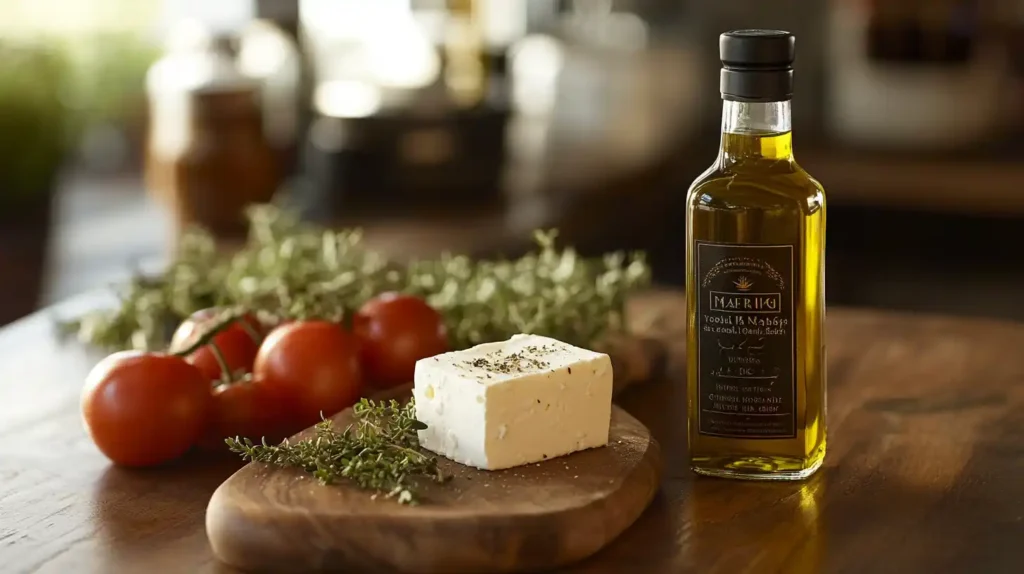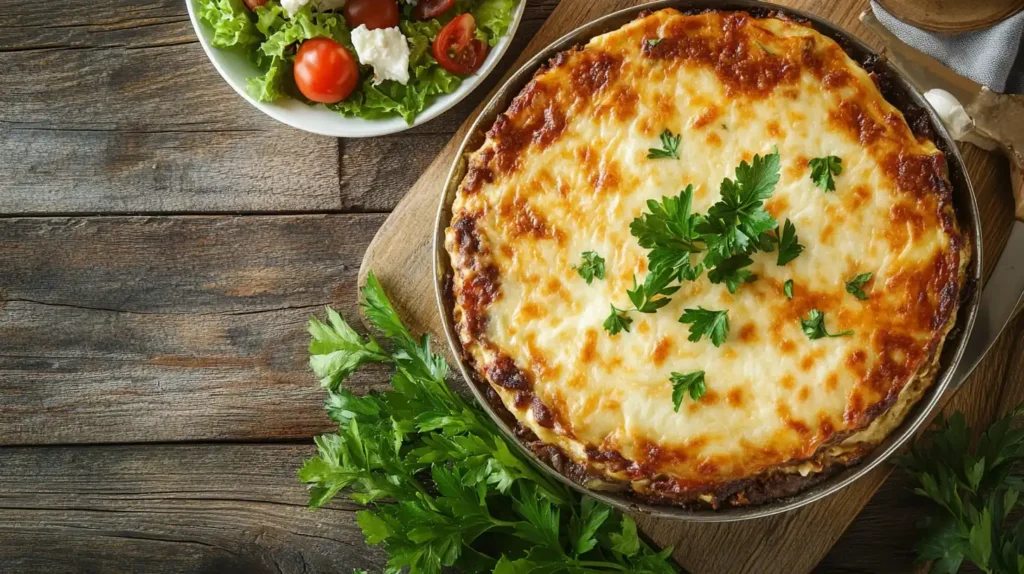Table of Contents
Introduction to Greek cuisine
Greek cuisine is a celebration of flavors, history, and culture, rooted in centuries of tradition. It is a Mediterranean diet at its finest, emphasizing fresh, wholesome ingredients and simple yet bold combinations. From hearty stews to refreshing salads, Greek dishes are both nourishing and a delight to the senses.
Historical Roots of Greek Food
The Influence of Ancient Greece
The foundations of Greek cuisine trace back to ancient Greece, where food was not only a means of sustenance but also a reflection of philosophical and cultural values. Ancient Greeks placed high importance on the balance of flavors, incorporating grains, legumes, vegetables, and seafood into their meals. Ingredients like olives, honey, and wine were staples, while dishes were often flavored with herbs like oregano and thyme. Meals were a communal activity, often tied to religious and social gatherings.
The Byzantine and Ottoman Contributions
Greek cuisine evolved significantly during the Byzantine Empire and later under Ottoman rule. The Byzantine era introduced new spices and ingredients like lemons and rice, while Ottoman influences brought dishes such as baklava, moussaka, and kebabs. These periods enriched Greek culinary traditions, blending local ingredients with exotic flavors to create a unique fusion that defines Greek cuisine today.

Key Ingredients in Greek Cooking
Olive Oil: The Liquid Gold
Olive oil is at the heart of Greek cuisine, often referred to as “liquid gold.” It is used in almost every dish, from salads and dips to main courses and desserts. Renowned for its health benefits and rich flavor, Greek olive oil is considered one of the finest in the world, thanks to the country’s ideal climate and centuries old cultivation techniques.
Fresh Herbs and Spices
Greek cooking relies heavily on fresh herbs and spices to create its distinctive flavors. Oregano, thyme, mint, and dill are staples, often used to enhance meats, vegetables, and sauces. Cinnamon and allspice are common in sweet and savory dishes, showcasing the versatility of Greek culinary traditions.
Dairy Products: Feta, Yogurt, and More
Greek cuisine boasts a rich tradition of dairy products, with feta cheese and yogurt taking center stage. Feta, a brined white cheese, is a cornerstone of dishes like Greek salad and pies, while yogurt is celebrated for its creamy texture and tangy flavor. Both are not only delicious but also valued for their nutritional benefits.

Greece’s Most Popular Dish: Moussaka
Origins of Moussaka
Moussaka stands out as one of the most iconic Greek dishes, representing the heart of Greek cuisine. Chefs craft this hearty baked casserole by layering eggplant, minced meat, and creamy béchamel sauce. While its origins spark debate, with some linking it to the Levant’s similar dishes, chef Nikolaos Tselementes revolutionized moussaka in the early 20th century. By blending French culinary techniques with traditional Greek flavors, he refined it into the beloved dish we know today.
Ingredients and Preparation
The classic moussaka recipe starts with slices of eggplant, often fried or roasted until tender. These are layered with a savory mixture of minced lamb or beef, onions, tomatoes, and a blend of spices like cinnamon and nutmeg. The crowning glory is a thick layer of béchamel sauce, made with butter, flour, milk, and eggs, which creates a creamy, golden crust when baked. The dish is assembled in layers and baked until bubbling and aromatic, offering a rich and comforting meal.
Variations Across Regions
While the traditional eggplant based moussaka is the most well known, variations exist across Greece. In some regions, potatoes or zucchini replace or accompany the eggplant layers. In others, the béchamel is swapped with a yogurt based topping for a lighter version. Vegan and vegetarian adaptations are also common, using lentils or mushrooms instead of meat. Each variation reflects the local ingredients and preferences of Greece’s diverse regions.

Other Iconic Greek Foods
Souvlaki and Gyros
ouvlaki and gyros are staples of Greek street food, cherished for their savory flavors and convenience. While souvlaki features skewered and grilled meat, it is often paired with pita bread, fresh vegetables, and tzatziki sauce. Gyros, made from meat cooked on a vertical rotisserie, offer a similar delicious experience wrapped in warm pita. Gyros, on the other hand, feature thinly sliced, spit roasted meat wrapped in pita with a similar assortment of toppings. Both dishes are seasoned with herbs and spices that highlight the simplicity and freshness of Greek cooking.
Spanakopita and Tiropita
Spanakopita and tiropita are quintessential Greek pies, made with flaky phyllo dough and flavorful fillings. While spanakopita combines spinach, feta cheese, onions, and herbs, tiropita highlights a creamy cheese blend, often mixing feta and ricotta. Versatile and delicious, these savory pastries are perfect as snacks, appetizers, or even main courses.
Dolmades: Stuffed Grape Leaves
Dolmades are a delicacy in Greek cuisine, consisting of grape leaves stuffed with a mixture of rice, herbs, and sometimes minced meat. The filling is often flavored with dill, mint, and lemon juice, giving it a bright and tangy taste. Dolmades can be served as a starter or part of a larger mezze platter, showcasing the versatility and elegance of Greek food.
Greek Desserts
Baklava: The Sweet Delight
Greek cooks prepare baklava by layering flaky phyllo dough with spiced nuts like walnuts, almonds, or pistachios. They bake it until golden and crispy, then pour a syrup of honey, sugar, and citrus over the layers, letting it soak in to create a rich, indulgent treat. With its Ottoman roots, baklava shines as a staple dessert at celebrations and gatherings, loved for its sweet and crispy textures.
Loukoumades: Greek Donuts
Greek cooks create loukoumades by frying small dough balls until crispy on the outside and soft on the inside. Traditionally, they drizzle them with honey and sprinkle them with cinnamon or crushed nuts. Additionally, modern versions often feature chocolate or fruit sauces for extra flavor. These sweet treats, popular at festivals, trace their origins to ancient Greece, where athletes received them as prizes in competitions.
Galaktoboureko: Custard Pie
Galaktoboureko is a traditional Greek dessert consisting of semolina custard encased in layers of buttery phyllo dough. Once baked, the pie is soaked in a fragrant syrup made with sugar, lemon, and sometimes cinnamon or orange. The result is a creamy, rich dessert with a satisfying contrast between the crisp phyllo and smooth custard. It is often served warm and is a beloved comfort food for many Greeks.
Greek Drinks and Beverages
Ouzo and Tsipouro
Greek hosts serve ouzo and tsipouro as iconic spirits that showcase the country’s rich culinary heritage. They typically dilute ouzo with water or ice, creating its signature cloudy white appearance and enhancing its anise flavor. Meanwhile, tsipouro, a stronger grape based spirit, is often enjoyed neat or paired with meze platters featuring olives, seafood, and dips. Additionally, tsipouro, sometimes infused with anise, is crafted from grape pomace. Both beverages play a key role in Greek social gatherings, symbolizing hospitality and camaraderie.
Greek Coffee and Herbal Teas
Greek coffee is a traditional, strong brew made in a briki, a small pot, and served in a demitasse cup. The coffee grounds settle at the bottom, and it is typically enjoyed slowly with friends or family. Another staple of Greek beverages is herbal teas, often made from locally sourced herbs like mountain tea (sideritis), chamomile, or sage. These teas are prized not only for their soothing properties but also for their health benefits, deeply rooted in Greek wellness traditions.
Regional Variations in Greek Cuisine
Crete: The Island of Flavors
People admire Cretan cuisine for its simplicity, freshness, and healthfulness, which embody the essence of the Mediterranean diet. The island’s fertile land produces high quality olive oil, fresh vegetables, wild herbs, and cheeses like graviera and myzithra. Cretan dishes often feature slow cooked meats, such as lamb or goat, paired with greens and seasoned with local herbs like oregano and thyme. Dakos, a traditional Cretan salad made with barley rusks, tomatoes, and feta or myzithra cheese, is a beloved example of the island’s culinary creativity. Cretan cuisine also boasts a rich variety of seafood dishes, thanks to its proximity to the sea.
Northern Greece: Spicy and Hearty Dishes
The cooler climate and proximity to neighboring Balkan countries shape the cuisine of Northern Greece. Dishes are often heartier and spicier than those in other regions, with an emphasis on meats, dairy, and robust flavors. Paprika and red pepper flakes are commonly used to season dishes like soutzoukakia (spiced meatballs) and sausages. The region is also famous for its pies, such as bougatsa, filled with sweet custard or savory cheese. In addition, Northern Greece produces unique wines, particularly from the Naoussa and Amyntaio regions, which pair beautifully with its rich dishes.
Cycladic Islands: Fresh and Light Cuisine
The Cycladic Islands, known for their picturesque landscapes and azure waters, offer a cuisine that reflects the simplicity of island life. Fresh seafood takes center stage, with dishes like grilled octopus, fried calamari, and fish soups being staples. The islands also produce high quality cheeses, such as kopanisti, a spicy fermented cheese from Mykonos. Seasonal vegetables, herbs, and legumes are frequently used, often in salads or stews. Desserts in the Cyclades often feature local honey and almonds, showcasing the region’s natural bounty and sweet flavors.
Greek Food Culture and Traditions
The Importance of Family Meals
In Greek culture, meals are much more than a means of sustenance they are a cornerstone of social and familial bonds. Family meals, often long and leisurely, are a daily ritual where members gather to share food, stories, and laughter. These gatherings emphasize togetherness and hospitality, with the concept of “philoxenia” (friendliness to strangers) deeply ingrained in Greek culture. Traditional meals often include several courses, beginning with appetizers like dips and bread, followed by hearty mains and concluding with fruits or sweets. Families use the table as a place for connection, passing down values and traditions through generations.
Celebratory Feasts and Festivals
Greek cuisine plays a central role in the country’s many celebrations and religious festivals.People often tie feasts to significant events such as weddings, baptisms, and name days, filling tables with traditional dishes, music, and dancing.Easter is one of the most important occasions, marked by the roasting of a whole lamb, magiritsa soup, and festive breads like tsoureki. Other festivals, such as those honoring local saints or harvests, showcase regional specialties and communal cooking traditions. These celebrations highlight the deep connection between food, faith, and community in Greek culture.
The Role of Greek Food in Modern Cuisine
Global Popularity
Greek food has gained immense popularity worldwide, celebrated for its emphasis on fresh, wholesome ingredients and simple yet bold flavors. Staples like Greek salad, moussaka, souvlaki, and tzatziki have become mainstays in international restaurants and home kitchens. The Mediterranean diet, rooted in Greek culinary traditions, is praised for its health benefits, leading to an increased interest in Greek food as both delicious and nutritious. Greek food festivals, restaurants, and markets across the globe further showcase the rich heritage and timeless appeal of Greek cuisine.
Fusion Dishes Inspired by Greek Flavors
Modern chefs and food enthusiasts are increasingly drawing inspiration from Greek flavors to create fusion dishes that blend traditional ingredients with contemporary techniques. Greek inspired pizzas topped with feta, olives, and oregano; Mediterranean style tacos with lamb and tzatziki; and desserts like baklava flavored ice cream illustrate how Greek cuisine continues to evolve and influence global culinary trends. This fusion of Greek traditions with modern innovation not only honors the heritage of Greek food but also ensures its relevance in an ever changing culinary landscape.
Frequently Asked Questions (FAQs)
What is the most popular Greek dish?
Many people widely regard moussaka as the most popular Greek dish. This hearty casserole features layers of eggplant, minced meat, and béchamel sauce, baked to golden perfection. It is a staple of Greek cuisine and a favorite among locals and visitors alike.
What is Greece’s national food?
While Greece has no officially designated national food, many people recognize moussaka and souvlaki as iconic representatives of Greek cuisine. Another strong contender is fasolada, a traditional white bean soup that holds a special place in Greek households.
What do Greeks eat the most of?
Greeks consume a variety of fresh and wholesome ingredients, with olive oil, bread, fresh vegetables, and feta cheese being everyday staples. Seasonal produce and seafood are also central to the Greek diet, reflecting the country’s Mediterranean roots.
What is the most popular Greek street food?
Souvlaki and gyros are the most popular Greek street foods. Souvlaki consists of grilled, skewered meat served with pita, vegetables, and tzatziki, while gyros feature thinly sliced, spit roasted meat wrapped in pita bread with similar accompaniments.
What is the main food and drink in Greece?
The main foods in Greece revolve around the Mediterranean diet, including dishes made with olive oil, vegetables, grains, and seafood. Popular drinks include ouzo, a traditional anise flavored spirit, and Greek coffee, a strong and aromatic brew.
For readers interested in exploring more about Greek culinary traditions, check out the article What Are the Traditional Greek Dishes? for a deeper dive into iconic foods beyond moussaka. Additionally, if you’re keen to discover more recipes inspired by Mediterranean flavors, visit Discover the World of Greek Recipes, where you’ll find a collection of mouthwatering dishes to recreate at home. These resources complement your journey into understanding why Greek cuisine holds such timeless appeal.
Conclusion: The Timeless Appeal of Greek Food
Greek cuisine is more than just food—it is a reflection of a rich cultural heritage, a celebration of community, and a testament to the Mediterranean way of life. Rooted in ancient traditions yet adaptable to modern tastes, Greek food continues to captivate people around the world with its emphasis on fresh ingredients, bold flavors, and nourishing simplicity.
Whether it’s the comforting layers of moussaka, the tangy bite of feta cheese, or the aromatic allure of freshly brewed Greek coffee, the essence of Greek cuisine lies in its ability to bring people together and create lasting memories. Its influence on global culinary trends and its integration into everyday meals worldwide underscore its timeless appeal. Greek food is not just a taste it’s an experience, a story, and a tradition that continues to thrive and inspire.

